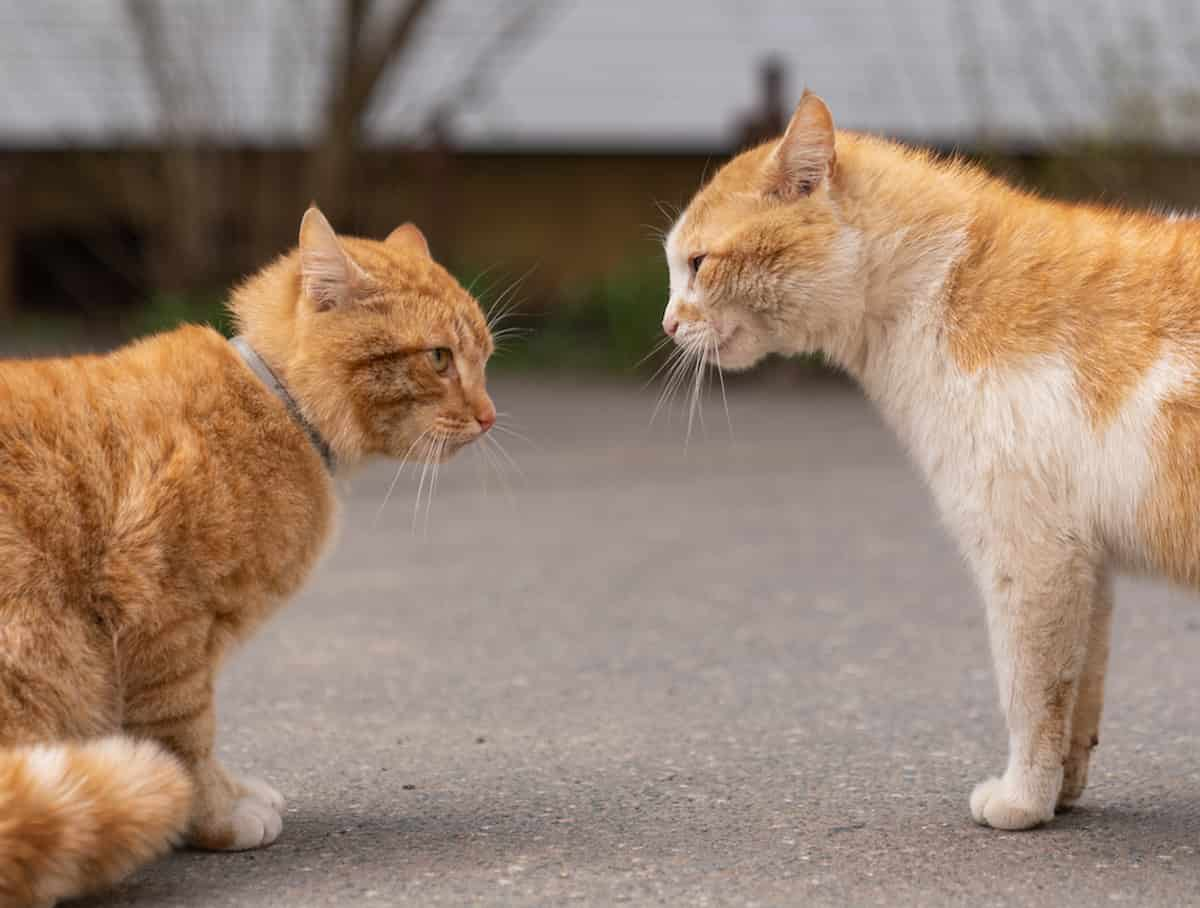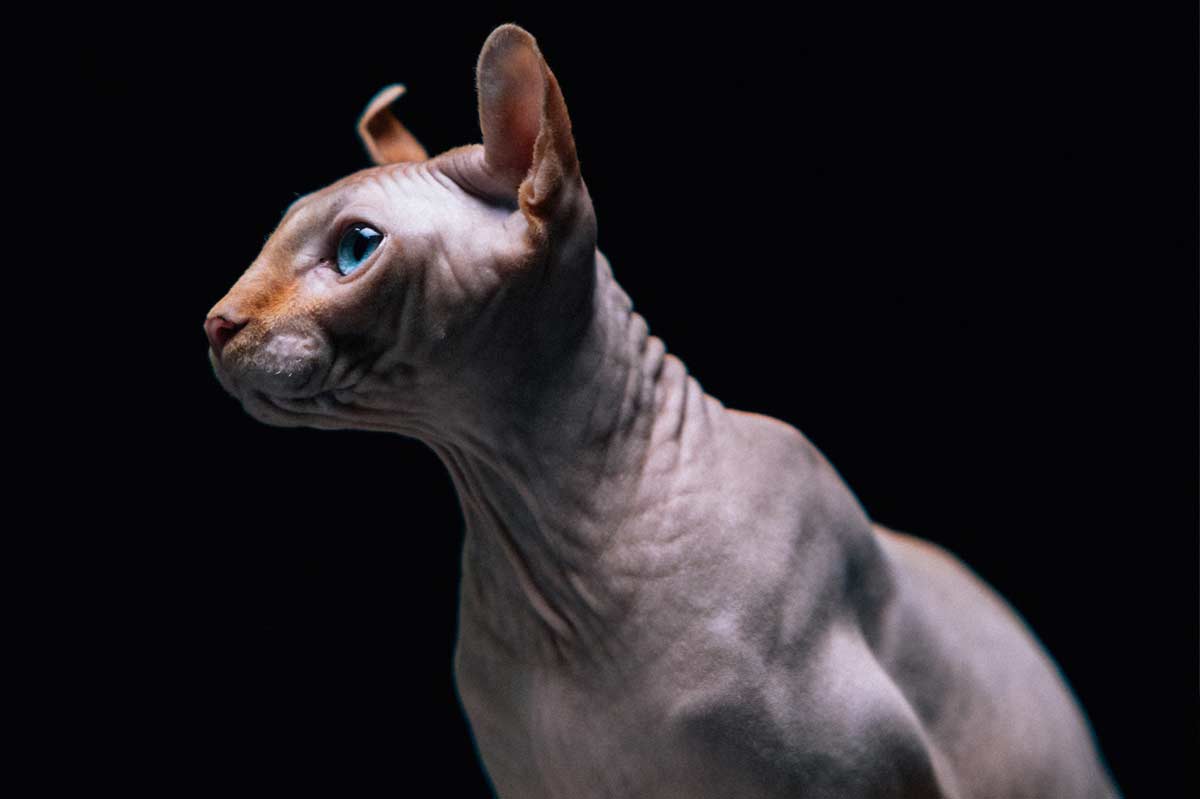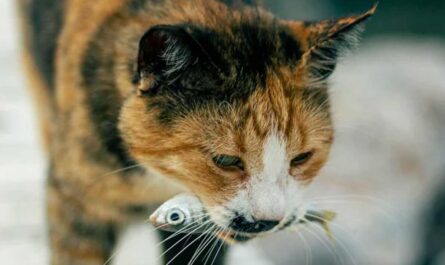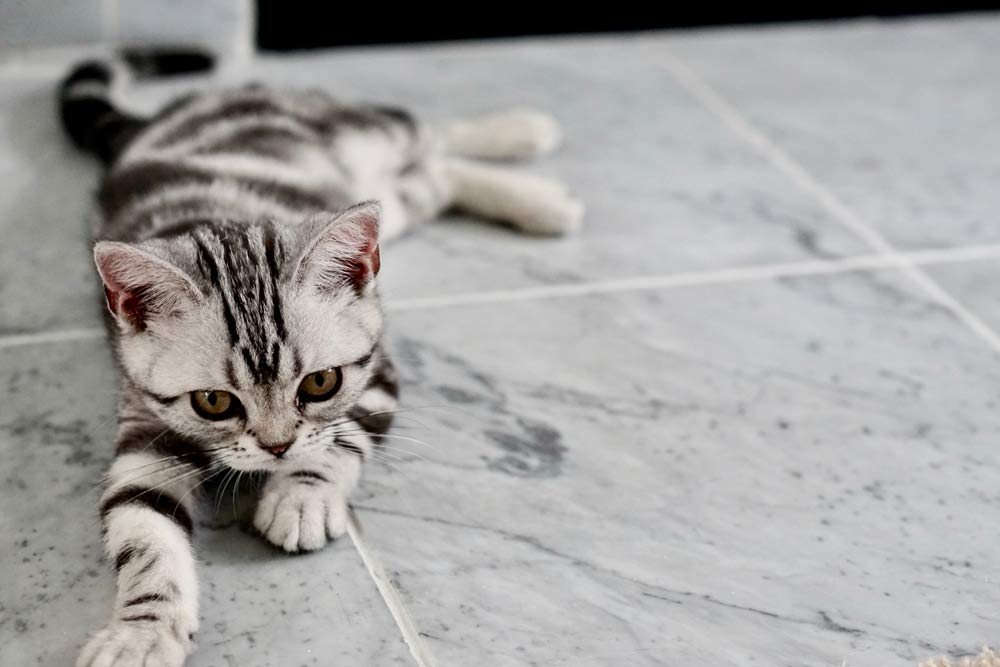What are some signs your cat is a boy or male? Have you ever gazed lovingly at your feline companion, only to be stumped by the age-old question: “Boy or girl?” Unlike their canine counterparts, identifying a cat’s gender isn’t always as straightforward as a glance. Fear not, fellow cat detectives! This guide will equip you with the tools to unravel the mystery, using a combination of physical clues, behavioral quirks, and personality traits. Remember, every cat is unique, and understanding their meowgicality is key to building a strong bond. So, grab your magnifying glass (or your favorite catnip toy), and let’s embark on this purrfectly fascinating journey!
Beyond the Glitz and Glamour: Demystifying Physical Traits
While some might tell you to peek under the tail, that’s not always the most reliable method. Male cats do have certain anatomical distinctions, but these can be subtle, especially in kittens. Plus, let’s face it, who wants to start a relationship with their cat by invading their personal space? Instead, let’s focus on some more subtle detective work.
First, forget the “scruff” myth! While gently lifting a cat by the scruff of the neck is an instinct for mothers, it doesn’t magically reveal their gender. Instead, pay attention to their overall size and development. Around puberty, male kittens tend to grow larger and develop broader jaws and more prominent cheekbones. Think of it like a feline coming-of-age transformation!
But remember, not all cats follow the same script. Breeds like Maine Coons and Ragdolls are naturally larger, while some female cats might surprise you with their muscular build. So, don’t rely solely on size – consider the whole picture, including their growth patterns and breed characteristics.
More Than Meets the Eye: Exploring Behavioral Clues
Now, let’s delve into the fascinating world of cat behavior. While there are some tendencies to watch for, remember that cats are individuals, and generalizations don’t always paint the whole picture.
Male cats, particularly unneutered ones, might be more prone to spraying urine to mark their territory. They might also exhibit more boisterous behavior, like yowling or fighting with other cats. However, some female cats can be just as vocal and territorial, so don’t jump to conclusions based on a single meow or spray.
Pay attention to how your cat interacts with you and their environment. Neutered males are often known for being cuddly and affectionate, while females might be more independent. But again, these are just tendencies, not guarantees. Your playful and adventurous kitty might be a female, and your cuddly lap cat could very well be a male!
Personality Purr-sonalities: Unraveling the Inner Cat
Finally, let’s not forget the most captivating aspect of our feline friends – their unique personalities! Some cats are social butterflies, while others prefer their own company. Some are playful goofballs, while others are dignified observers. These personality traits are shaped by a combination of genetics, upbringing, and individual experiences, and they don’t necessarily correlate with gender.
The key is to appreciate your cat for who they are, regardless of their gender identity. Observe their quirks, celebrate their unique meowgicality, and build a loving bond based on mutual respect and understanding. Remember, the most important thing is to provide your feline friend with a safe, enriching environment where they can thrive, regardless of whether they’re a majestic tomcat or a sassy queen.
So, there you have it! By combining physical observations, behavioral clues, and an appreciation for your cat’s unique personality, you can unlock the secrets of their identity. Remember, the journey is just as important as the destination, so enjoy the process of getting to know your furry friend better. And who knows, you might even discover that the real mystery isn’t their gender, but the endless love and companionship they bring to your life!
Tail Tales: Decoding Behaviors and Personalities
Unraveling the mystery of your feline friend’s gender can be a curious quest, especially when whiskers and purrs offer limited clues. While some physical characteristics might offer hints, remember that every cat is unique, defying neat gender stereotypes and showcasing a wonderful spectrum of personalities. So, let’s embark on a playful exploration of behaviors and preferences, celebrating the individuality that makes each cat truly special.
Spraying Savvy: Beyond Messy Misunderstandings
Spraying, a behavior often associated with male cats, can be triggered by various factors for both genders. Territorial marking might occur in unneutered cats of any sex, seeking to establish their domain. However, stress, medical issues like urinary tract infections, or even litter box preferences can also lead to spraying. Consulting your veterinarian can help rule out medical causes and recommend strategies for addressing territorial marking, often involving neutering, environmental enrichment, and positive reinforcement.
Hissy Fits and Playful Brawls: The Joy of Roughhousing
Male cats might have a reputation for boisterous play, engaging in mock fights and loud purrs that sound more like growls. But remember, feisty felines come in all genders! Rough play and vocal interactions are simply different ways cats express themselves, and some females might be just as enthusiastic about a playful tussle. Observing your cat’s body language and ensuring playtime stays gentle and positive is key, regardless of their gender.
Aloof Attitude: Debunking the Myth of the Distant Dude
The image of the aloof, independent male cat is a charming trope, but it doesn’t always hold true. Just like humans, cats have diverse personalities, and their level of affection can vary greatly. Breed influences also play a role, with some breeds known for being more cuddly or social than others. So, whether your feline friend showers you with head bumps or prefers a more dignified side-eye, their unique personality is what makes them special.
Curious Climbs and Marking Territory: Exploring with a Dash of Scent
Both male and female cats are natural explorers, drawn to high vantage points and hidden nooks. Climbing furniture, scratching posts, and even bookshelves is simply their way of satisfying their innate curiosity and keeping their bodies active. While unneutered male cats might occasionally leave scent markers during their climbs, this behavior isn’t exclusive to them, and responsible pet ownership includes neutering or spaying all cats to prevent unwanted litters and potential health issues.
The Cuddly Conundrum: Redefining Affection
The myth of the aloof male cat often extends to the realm of cuddles. But the truth is, cats of all genders can be cuddle monsters, seeking out warmth and affection on their terms. Some might prefer gentle head scratches, while others might melt into your lap for an extended purr session. Remember, affection is a language spoken in many ways, and observing your cat’s unique preferences is the key to unlocking their purrfect cuddle style.
So, as you navigate the playful world of your feline friend, remember that their gender is just one facet of their unique personality. Embrace their quirks, celebrate their individuality, and shower them with love and respect, regardless of their tail tales and purrs. After all, the true magic of cats lies in the beautiful mystery of their purr-sonalities, waiting to be discovered with an open heart and a curious mind.
Individuality Reigns Supreme: Embracing Cat Uniqueness
So, your curious kitty has captured your heart, and you’re wondering if it’s a playful prince or a mischievous princess gracing your home. While knowing your cat’s gender can sometimes be helpful, like choosing the right name or understanding specific health needs, the most important aspect is celebrating their unique personality, regardless of what’s between their furry ears.
Nature vs. Nurture: A Dance of Influences
Like snowflakes, no two cats are exactly alike. Their quirks and behaviors are a beautiful tapestry woven from genetics (nature) and the environment they grow up in (nurture). Just like some humans are naturally outgoing while others prefer quiet corners, cats too have built-in tendencies influenced by their breed and family history. However, remember that nurture plays a big role too! The love, care, and experiences you provide shape their personality just as much as their genes.
Breed Breakdown: A Glimpse, Not a Guarantee
Certain breeds might be known for specific behaviors. For example, Siamese cats are often vocal communicators, while Maine Coons tend to be gentle giants. However, it’s crucial to remember that these are just tendencies, not absolutes. Your independent Siamese might be a quiet observer, and your cuddly Maine Coon could surprise you with their adventurous spirit. Every cat is an individual, and judging their gender based solely on breed characteristics is like trying to predict tomorrow’s weather based on yesterday’s sunshine – not very accurate!
Beyond the Stereotypes: Celebrating Their True Colors
Forget the pink bows and blue bandanas! Instead of relying on outdated stereotypes, focus on the unique personality your cat unfolds before you. Do they greet you with enthusiastic head bumps or prefer a more regal tail flick? Are they the life of the party, chasing feathery toys with boundless energy, or a contemplative soul who enjoys basking in sunbeams? Observe their playful antics, cuddle preferences, and communication style. These telltale signs will paint a much clearer picture of who your feline friend truly is, gender aside.
When in Doubt, Seek Expert Help
Sometimes, despite our best efforts, the mystery remains. If you’re truly curious about your cat’s gender and DIY methods haven’t been helpful (remember, those online quizzes aren’t always reliable!), don’t hesitate to consult your veterinarian or a trusted breeder. They have the expertise and tools to provide a definitive answer.
Ultimately, whether your cat is a he, she, or they, the most important thing is to cherish their unique personality and shower them with love and understanding. After all, the purrs of contentment and the brush of a soft head against your hand know no gender – they simply speak the universal language of feline affection. So, embrace your cat’s quirky awesomeness, celebrate their individuality, and enjoy the incredible journey of sharing your life with this furry friend, no matter their official title!

More Than Just Gender: Understanding Your Cat’s Needs
While understanding your cat’s biological sex can be helpful for certain medical considerations, fixating solely on “boy” or “girl” labels can overshadow the rich tapestry of their personality and needs. Instead of seeking definitive answers about gender, let’s embark on a journey of discovery to truly understand and appreciate your unique feline companion. How AI, ChatGPT maximizes earnings of many people in minutes
Unleashing the Power of Observation: Tailored Care for Every Cat
Instead of relying solely on gender stereotypes, focus on becoming a keen observer of your cat’s preferences. Does your feline friend favor playful bursts of energy or prefer serene cuddle sessions? Are they a connoisseur of gourmet wet food or a devoted kibble enthusiast? By tuning into their quirks and habits, you can create a personalized environment that caters to their specific needs and desires. Imagine customizing their playtime with toys that pique their unique interests, offering a variety of cozy hideaways for quiet moments, or even adjusting their food options to match their taste buds. Remember, every cat, regardless of gender, is an individual deserving of care tailored to their unique preferences.
Beyond Labels: Celebrating the Joy of Feline Companionship
Moving beyond the limitations of gender labels allows us to truly appreciate the remarkable companionship cats offer. Each feline friend, be it a playful sprite or a cuddly lap cat, brings their unique personality and charm to our lives. Embrace the laughter brought on by their silly antics, cherish the moments of purring contentment, and find comfort in their quiet presence. Their love and companionship transcend arbitrary labels, enriching our lives in ways that defy definition. Motivation – Mind – Success – Thinking – Productivity – Happiness
Responsible Pet Ownership: A Commitment to Every Cat’s Well-being
Remember, regardless of whether your feline friend identifies as a “boy” or a “girl,” responsible pet ownership remains paramount. Spaying or neutering your cat, providing regular veterinary care, and ensuring a safe and loving environment are crucial aspects of responsible cat ownership. These actions demonstrate your commitment to their well-being, fostering a healthy and happy life for your furry companion.
By observing your cat’s unique nature, celebrating their individuality, and prioritizing responsible pet ownership, you can cultivate a loving bond that transcends the limitations of gender labels. So, step back from the quest for definitive answers and embark on a journey of understanding, appreciation, and love for your remarkable feline friends, just as they are. After all, the purrs of contentment and the flick of a playful tail speak volumes more than any label ever could. Business – Money Making – Marketing – E-commerce
Beyond the Signs: Additional Insights and Resources
Unraveling the mystery of your cat’s gender can be an engaging journey, but remember, it’s just one piece of the puzzle that makes your feline friend so special. Let’s delve into some additional resources and debunk some common myths to ensure you’re providing the best care for your unique companion.
Debunking the Mythical Meow: Addressing Common Misconceptions:
- Myth: Male cats are always bigger and stronger. While male cats generally tend to be larger, there’s significant variation within breeds and individual cats. Don’t judge a purr by its size!
- Myth: Only female cats knead and make “biscuits.” Both genders engage in this adorable behavior, often associated with contentment and comfort. Health books, guides, exercises, habits, Diets, and more
- Myth: Male cats are more aloof and independent. Personality traits are largely individual, not gender-specific. Some male cats can cuddle bugs, while some female cats enjoy their solitude.
Remember, these are just generalizations, and your cat’s personality is a beautiful blend of genetics, experiences, and individual quirks.
Ask the Pawsome Experts: Seeking Professional Guidance:
Feeling unsure or have further questions? Don’t hesitate to consult trusted resources:
- Veterinarians: Your vet can provide insights based on physical characteristics and discuss any health concerns related to gender.
- Cat Breeders: Reputable breeders often have extensive knowledge about specific breeds and their gender-related tendencies. Fitness – Meditation – Diet – Weight Loss – Healthy Living – Yoga
- Animal Behaviorists: If you’re facing specific behavioral challenges, an animal behaviorist can offer personalized guidance.
These experts can be invaluable allies in understanding your feline friend’s unique needs and ensuring their well-being.
Share Your Whisker-Wisdom: Connecting with the Cat Community:
The wonderful world of cat lovers is eager to hear your story! Share your experiences and observations about your cat’s personality, regardless of their gender, on online forums, social media groups, or even with fellow cat owners at the park. You might be surprised by the insights and connections you forge along the way!
Final thought: Celebrating the Individual Feline
So, have you figured out your cat’s gender? Whether you have or haven’t, remember, that the most important aspect is appreciating their unique personality and providing them with a loving and enriching environment. RPM 3.0 – 60% CONVERSION & Money for Affiliate Marketing
Embrace the Mystery: Cats are complex creatures, and their behaviors can sometimes defy easy categorization. Enjoy the journey of discovery, celebrating their quirks and preferences.
Beyond Gender: The bond you share with your cat transcends labels. Focus on building a strong relationship filled with mutual love, respect, and understanding. Their gender might be interesting, but it’s just one facet of their amazing personality.
Final Call to Action: Let’s celebrate the joy and companionship our feline friends bring into our lives. Share your cat’s unique stories, foster understanding within the cat community, and appreciate the individual purrsonalities that make each meowgical in their way. Remember, every cat is a mystery waiting to be unwrapped, and the journey of discovery is just as rewarding as the answer itself. Now go forth, cuddle your cat, and appreciate the unique purr-sonality that makes them so special! Cat accessories on Amazon
Additional Resources
- The American Society for the Prevention of Cruelty to Animals (ASPCA): https://www.aspca.org
- The Humane Society of the United States: https://www.humanesociety.org
- Your local veterinarian: They can provide personalized advice and guidance on caring for your specific cat.
- The International Cat Care: https://www.facebook.com/icatcare/ – Expert advice and resources on all things feline.
- Your Local Feline Shelter or Rescue: Connect with knowledgeable staff and volunteers who can offer guidance and support.
Remember, responsible pet ownership starts with education and open communication with your veterinarian. They can provide valuable insights and personalized guidance to ensure your feline friend enjoys a happy and healthy life, regardless of gender identity.
Other Interesting Articles
- How to Stop A Cat from Spraying after Neutering: 11 Tips
- How to Tell if A Cat is in Pain from Arthritis: How to Help
- 14 Reasons Why Is My Cat Making Weird Purring Noises
- How to Take Care of A Kitten without A Mother: 21 Tips
- What Is Caterwauling? 10 Most Common Reasons Cats Do It
- How to Introduce A Cat To A New Home When Moving?
- Cat Declawing: Tips, FAQs, Health, Alternatives, Pros, Cons
- New Cat? 20 Common Warning Signs When Introducing Cats
- 23 Sure Signs Your Cat May Be in Pain and How to Help It
- How to Stop A Neutered Cat From Spraying: 15 Simple Tips
- 12 Signs Your Cat May Require a Feline Companion
- Feline Pheromones: 12 Ways Calming Cat Pheromones Work
- Do Cats Feel Lonely without Other Cats? 6 Signs of Loneliness
- 10 Reasons Why Cats Hiss: How To Stop The Behavior
- Cat Feeding: Tips, Guide, FAQs, Chart for Kittens to Veterans
- Cat Vaccinations: Schedule, FAQs, Side Effects, and Costs
- 44 Strange, Weird, and Random Cat Behaviors Explained
- 21 Pro Tips for Fostering Kittens: Essential Care Guide
- 18 Cat Sounds Your Feline Makes: What They Mean
- Sexing Kittens: How to Tell, Determine the Sex of Your Kitten



